Chapter 27:Art of the Americas after 1300
1/4
There's no tags or description
Looks like no tags are added yet.
Name | Mastery | Learn | Test | Matching | Spaced |
|---|
No study sessions yet.
5 Terms
MACHU PICCHU
Peru. Inca, 1450-1530.
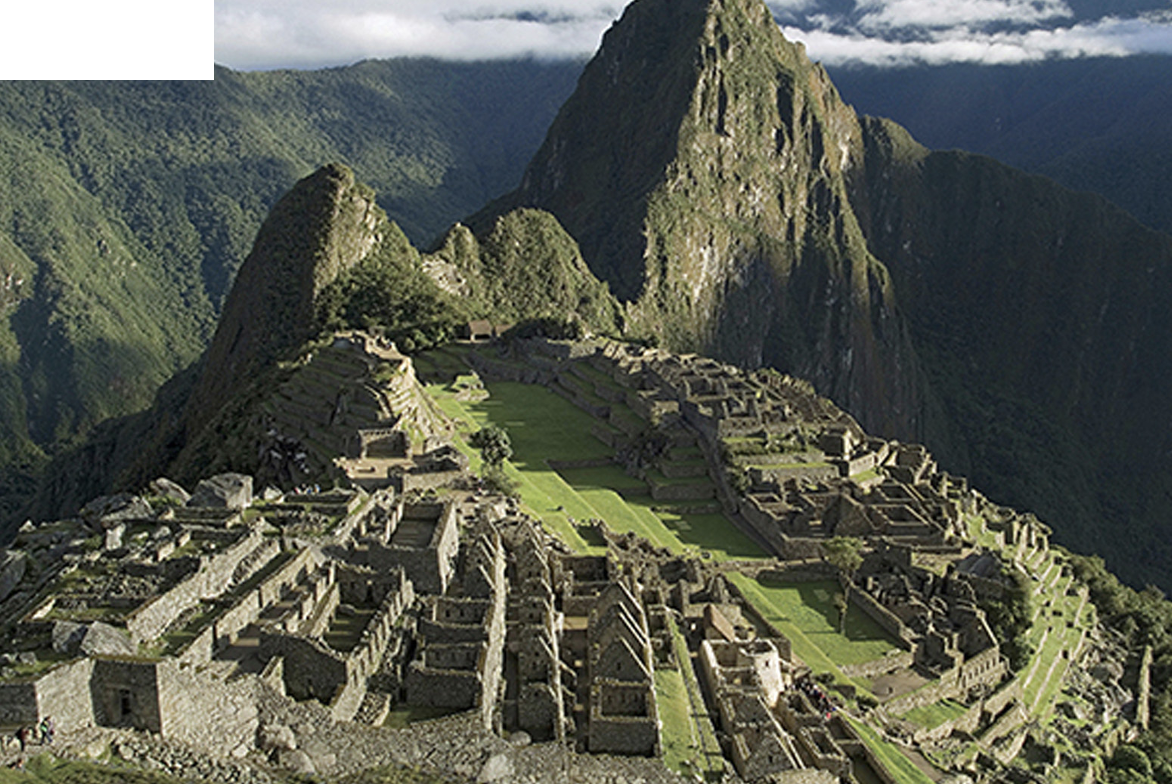
INCA MASONRY, DETAIL OF A WALL AT MACHU PICCHU
Peru. Inca, 1450-1530.
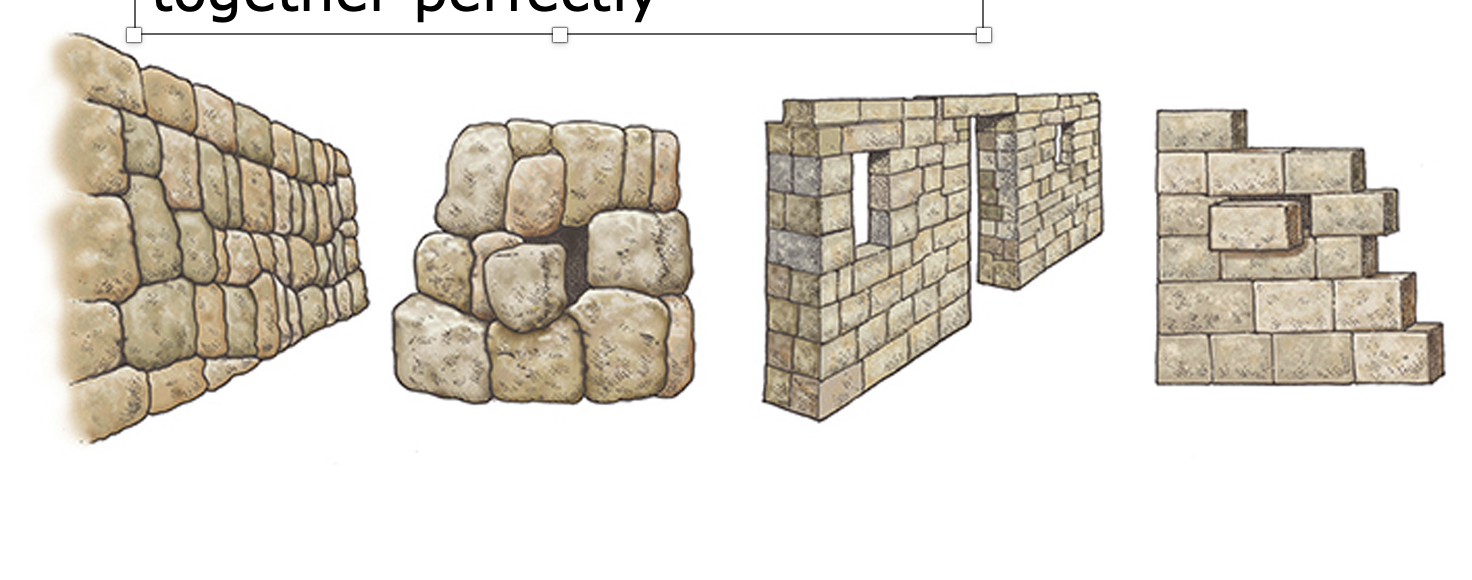
Machu Picchu
originally a vibrant city
8000 ft above sea level, between. 2high peaks in eastern andes and looks down on the Urubamba River
stone building, would have had thatched roofed, terraces around central plazas, narrow agriculture terraces into valley
was royal estate of inca ruler Pachacuti
court may have went to cusco due to winter weather
Diplomatic negotiations ceremonial feast may have occured
Inca architecture: design with great sensitivity to its surrounding. Walls and plazas frame vistas of surrounding landscape, carefully selected stones echo shapes of mountains beyond
Cusco was a showcase of Inca masonry, architecture was an expressive form for the Inca(shape of stone conveyed sense of power, and the way they made walls without without needing mortar expressed Inca’s social order)
Inca masonry:
Working with simple tools: heavy stones hammers, no mortar
stonework of great refinement and durability:roads and bridge linking empire, terraces for crops, simple and elaborate structures
rectangular or irregular polygonal blocks
adjoining blocks were painstakingly shaped to fit tightly together without mortar
stone may be slightly beveled for a pillowed shape with recessed joins or walls are smooth for a continuous flow to form a seamless whole
some up to 27 ft tall
inca masonry has survived earthquakes that has destroyed later structures
At macchu picchu all buildings and terraces wthing 3square mile were made of granite
commoner’s houses and some walls were constructed of irregular stone that were carefully fitted together, while fine polygonal or smoothed masonry distinguished palaces and temples
WAMPUM BELT, TRADITIONALLY CALLED WILLIAM PENN'S TREATY WITH THE DELAWARE
1680s. Shell beads,
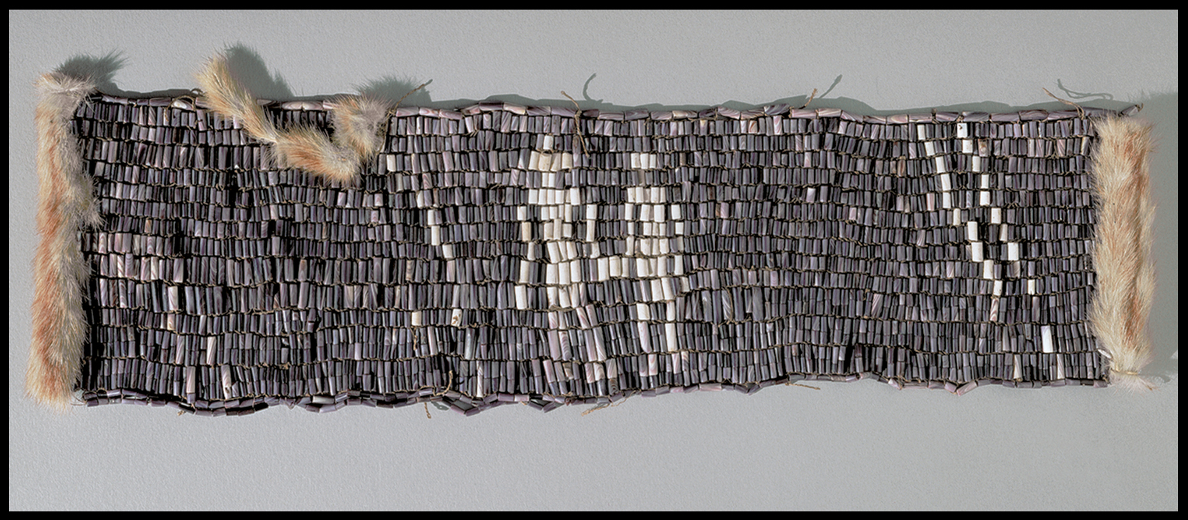
The belt represents peaceful agreement, indigenous people invented treety, symbolize friend treaties often with a belt, peace and friendship agreements were long lasting I come cases, two people literally shaking hands
video: holding beeds that was 500 years old was like holding his ancestors, powers in the beeds. Uses replicas to help learn about them . WAMPUM BELT, records the hard times, its like the constitution, and records peace, Pine trees is like a symbol of trees. Agreement to co exist on the river of life. Treaty is about the relationship between the people.
covenant chain of peace signifies honesty and helpfulness, peaceful, when the king needed something t\he would shake the belt. the king told the indigenous to fight against their enemies to make peace, chain has 3 links(peace, respect, on going friendships.
The belts helps understand their poeple and history
Woodlands ppl made belts and strings of cylindrical purple and white beads(made from whelk and clam shells) named”Wampum”
Iroquois and Delaware ppl used wampum to keep records(purple and white patterns helped memeroy aid) and exchanged belts to seal treaties
Few survive, this one said to commemorate an unwritten treaty when the land that is now pennsylvania was ceded by the Delaware in 1682, especially prized.
belt has two figures of equal size holding hands showing mutual respect between Delaware and Penn’s society of friends(quakers), that friendship later collaps into land fraud and violence
wampum strings and belts had the authority of legal agreement and also symbolized a moral and political order
What is quillwork
woodland people art which focused on adornment
Involve dying dyeing porcupine and bird quills with a variety of natural dyes, soaking the quills to soften them, and then working into rectilinear , ornamental surface pattern on deerskin clothing and birch-bark items like baskets and boxes.
CHILKAT BLANKET
Southeast Alaska. Tlingit people, c. 1850. Mountain-goat wool, yellow cedar bark, linen thread,
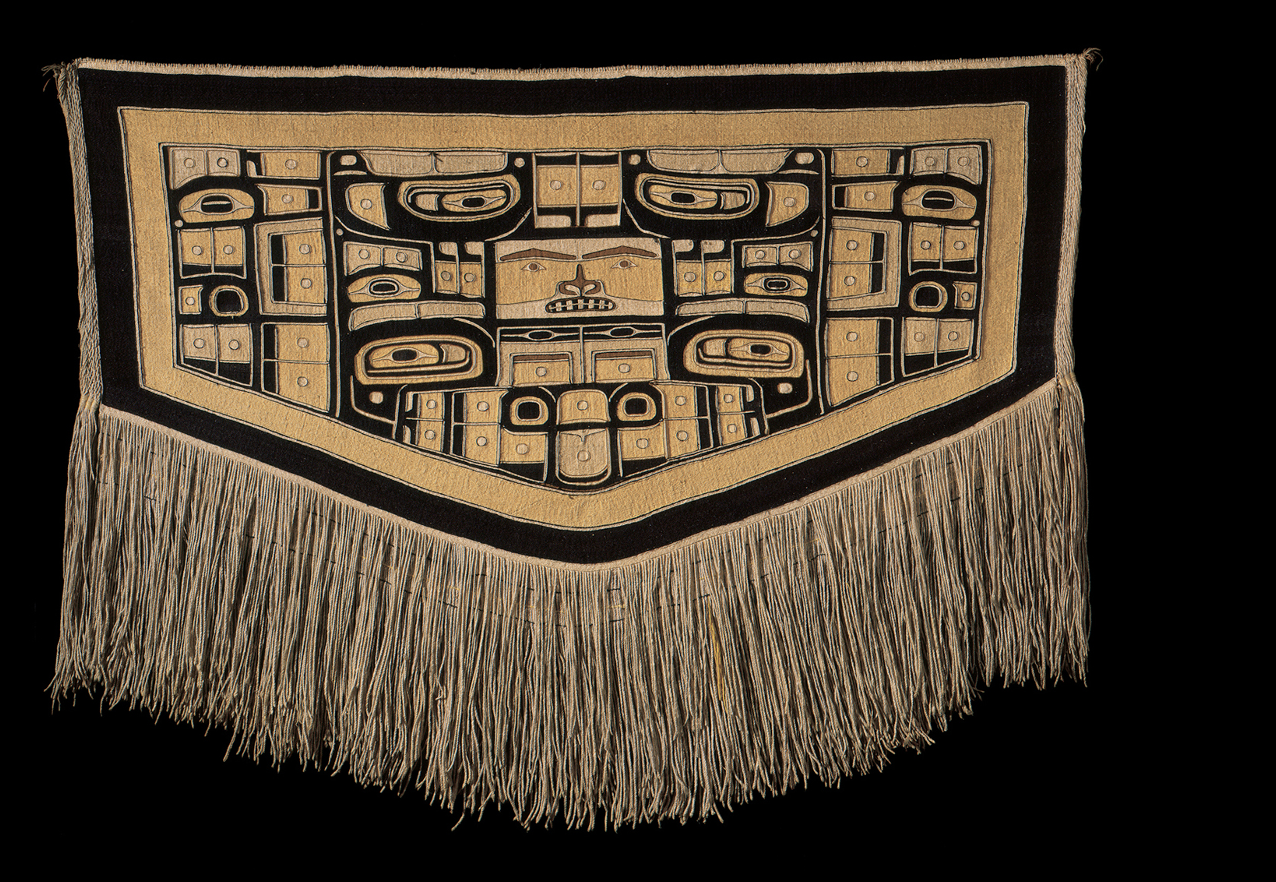
Blanket and textiles were collaborative by men and women of the Chilkat Tlingit which had prestige among Northwest coast peoples
men drew patterns on boards, women wove them into blankets, using shredded cedar bark and mountain-goat wool
Wever weved by hanging. cedar wrap threads from a rod and twined coloured goat wool back and forth through them to make pattern, this technique can be defined by curving lines.The ends of the wrap formed fringes at the bottom of blanket
The popular design is known as the diving whale, the central panel shows the downward facing whales, while the panels of sides have been interpreted as this animal’s body or seated ravens seen in profile
Northwest paintings/weaving have 2 basic elements: the avoid(slight bent rectangle with rounded corners(, formline(continuous, shape defining line)
subtly swelling black formlines define gently curing avoids and C shapes
when blanket is worn, 2 dimensionalnwould become 3 dimensional with central figure curving over wearer’s back and intricate side panels crossing over hos shoulders and chest
Maria Montoya Martinez and Julian Martinez BLACKWARE STORAGE JAR
New Mexico. c. 1942. Ceramic,
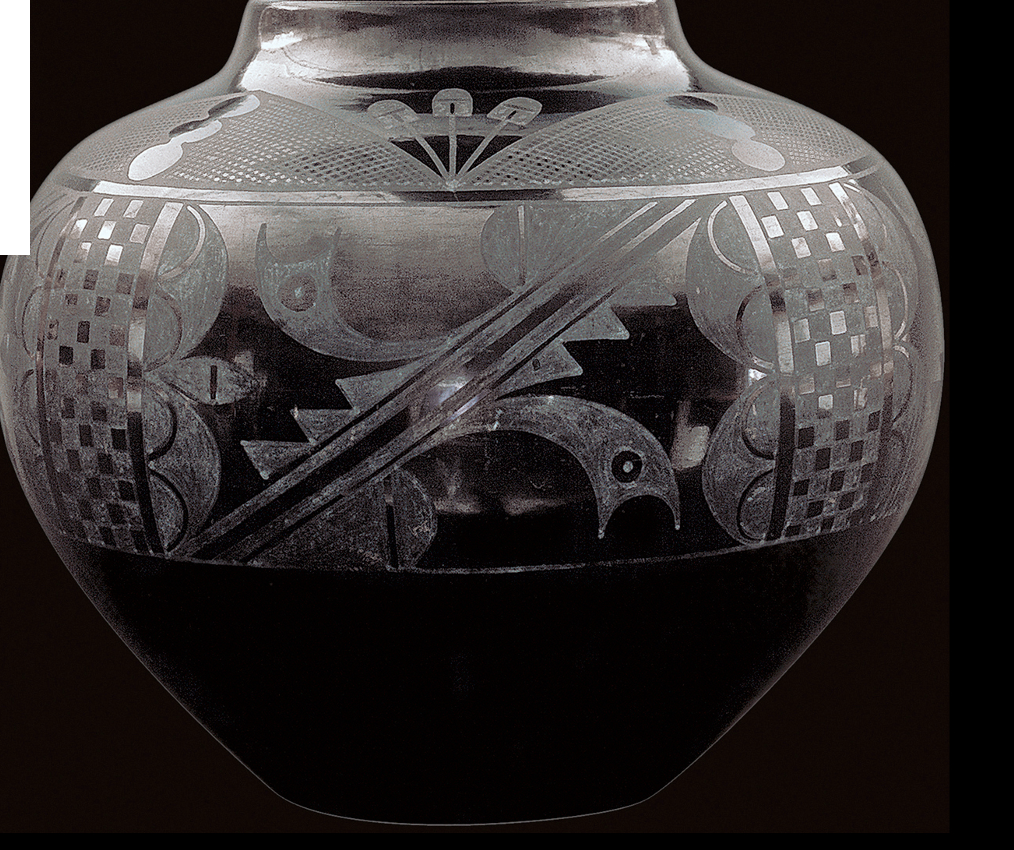
Tradiontionaly ceramics were a women’s art among Pueblos ppl
Wares made by coiling and other hand building techniques and the fired at low temperature in wood fires
best known 20th cent potter is Maria Montoya Martinez of Pueblo in New Mexico
Inspire by prehistoric pottery that was unearthed at a nearby archaelogical excavations and by the then fashionable art deco style, she and her husband developed an distinctive blackware ceramic style notable for elegant form and subtle texture
Maria martinez made pots covered with a slip that was then burnished
using additional slip, julian(husband) painted pots with design interpreted traditional pueblo and ancestral Puebloan imagery
after fifirng the burnished ground became lustrous black slip reamind matt
by 1930’s in San Ildefonso blackware became a communal enterprise
friend and family all worked making pots and Maria signed all the pieces so that everyone in the community profited from her fame within the art market